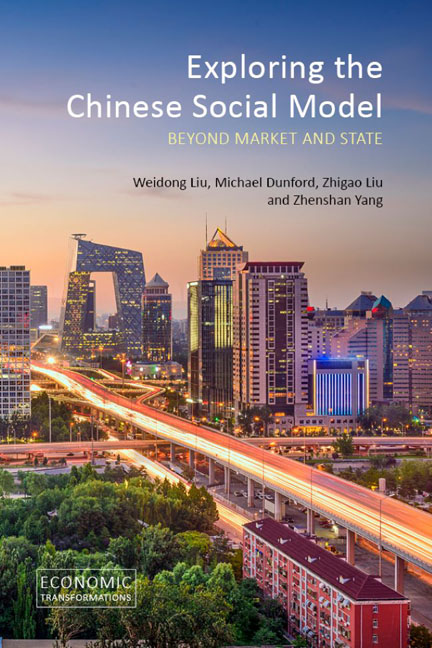Book contents
- Frontmatter
- Contents
- Preface and acknowledgements
- List of illustrations
- 1 Introduction: the China model as a specific socially embedded market economy
- 2 Governance instruments: the role of the party and the state
- 3 Spatial governance instruments in China
- 4 Special economic spaces in China
- 5 Regional development in China
- 6 Poverty alleviation in China
- 7 Conclusion
- References
- Index
6 - Poverty alleviation in China
Published online by Cambridge University Press: 20 January 2024
- Frontmatter
- Contents
- Preface and acknowledgements
- List of illustrations
- 1 Introduction: the China model as a specific socially embedded market economy
- 2 Governance instruments: the role of the party and the state
- 3 Spatial governance instruments in China
- 4 Special economic spaces in China
- 5 Regional development in China
- 6 Poverty alleviation in China
- 7 Conclusion
- References
- Index
Summary
INTRODUCTION
In 1949 new China emerged from the War of Resistance against Japanese Aggression (1937–45) and the subsequent Civil War (1945 to 1949) as almost the poorest country in the world. In 1950 the violation of Chinese territorial sovereignty and the need to deter a new invasion saw China respond to a North Korean request and enter the War to Resist US Aggression and Aid Korea, a struggle it also won but at considerable cost in terms of human life and the dedication of resources to strategic military and related industries. From 1949 through the 1960s China was subjected to a sustained economic embargo imposed by the United States, which was expanded to cover medicines, tractors and fertilizers (Zhang, cited in Losurdo 2008: 287– 92).
And yet, in these extraordinarily difficult circumstances, the new China saw life expectancy increase from 35 years in 1949 to 57 in 1957 and 68 in 1981 (Xinhuanet 2019), while its population increased from 554.4 million to 1,014 million. According to the World Bank (1981: 101), 1979's life expectancy of 64 years was higher than the average of 51 for low-income countries and 61 for middle-income countries; adult literacy stood at 66 per cent, compared with 39 per cent in low-income countries and 72 per cent in middle-income countries; while net primary school enrolment (93 per cent) was just short of that for industrialized countries (94 per cent).
In 1978 per capita rural income stood at ¥134 (81 PPP$) while the per capita income of urban residents was ¥343.4 (208 PPP$), yet the latter increased to ¥454.2 if the value of welfare, medical and other in-kind provision is included (Zhang 1994). In 1978, although there were many status and regional differences, China was egalitarian, with small income inequalities within communes and cities. In the words of the World Bank, “China's most remarkable achievement during the past three decades” was to have made “low-income groups far better off in terms of basic needs than their counterparts in most other poor countries”, thanks to the priority attached to food, education and health (World Bank 1983: 11).
- Type
- Chapter
- Information
- Exploring the Chinese Social ModelBeyond Market and State, pp. 135 - 166Publisher: Agenda PublishingPrint publication year: 2022

